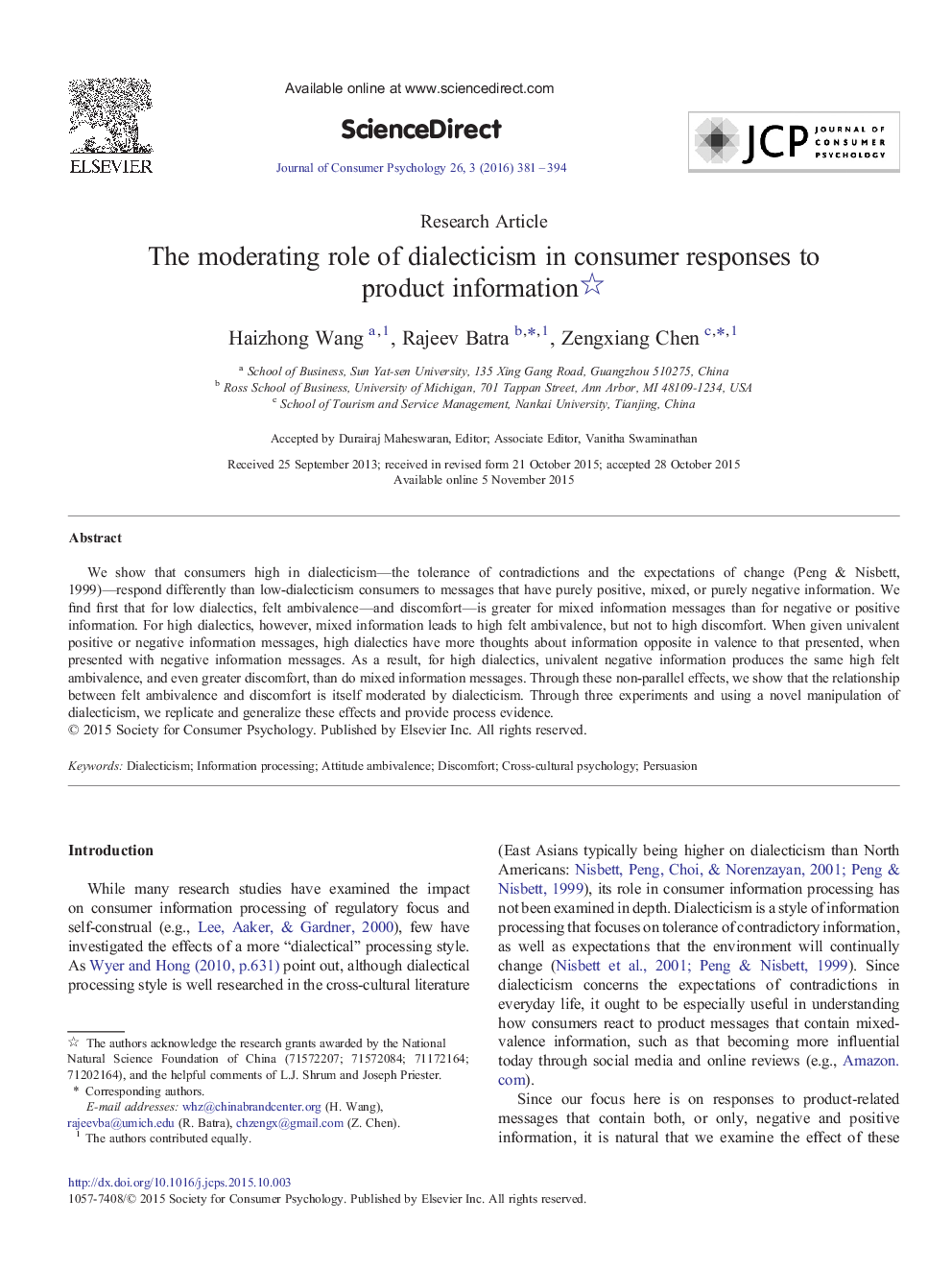| Article ID | Journal | Published Year | Pages | File Type |
|---|---|---|---|---|
| 881971 | Journal of Consumer Psychology | 2016 | 14 Pages |
We show that consumers high in dialecticism—the tolerance of contradictions and the expectations of change (Peng & Nisbett, 1999)—respond differently than low-dialecticism consumers to messages that have purely positive, mixed, or purely negative information. We find first that for low dialectics, felt ambivalence—and discomfort—is greater for mixed information messages than for negative or positive information. For high dialectics, however, mixed information leads to high felt ambivalence, but not to high discomfort. When given univalent positive or negative information messages, high dialectics have more thoughts about information opposite in valence to that presented, when presented with negative information messages. As a result, for high dialectics, univalent negative information produces the same high felt ambivalence, and even greater discomfort, than do mixed information messages. Through these non-parallel effects, we show that the relationship between felt ambivalence and discomfort is itself moderated by dialecticism. Through three experiments and using a novel manipulation of dialecticism, we replicate and generalize these effects and provide process evidence.
